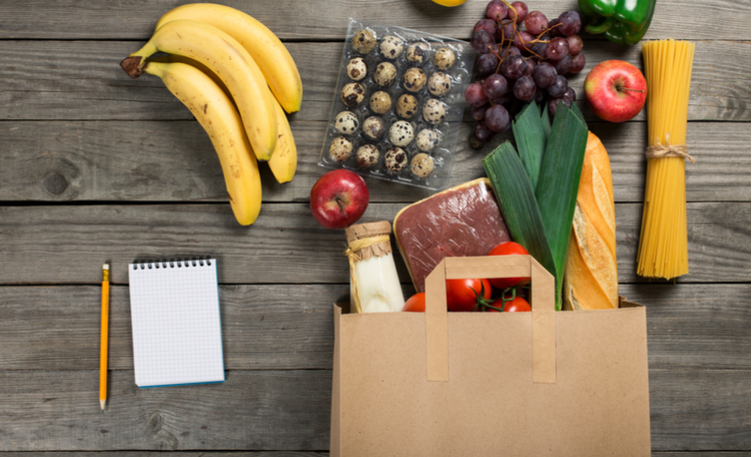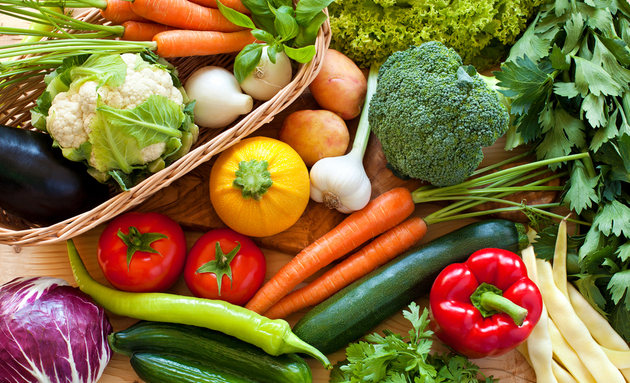
DASH Diet For Hypertension
What you eat can directly affect your blood pressure levels and this has a significant impact on the quality of your life. Following a healthy diet is an important part of managing hypertension and this is where the DASH diet comes into play.
The Dietary Approaches to Stop Hypertension is a diet plan with a primary focus on reducing sodium intake. It also involves adding a variety of nutrient-rich foods including potassium, calcium, magnesium, protein, and fibre to your diet that helps to lower blood pressure.
DASH Diet: Sodium Intake:
Based on your health needs, you can opt for one of the below diets:
- Standard DASH diet. You can consume up to 2,300 milligrams (mg) of sodium a day.
- Lower sodium DASH diet. You can consume up to 1,500 mg of sodium a day.
Basics of the DASH Diet

The DASH diet encourages a fixed number of daily servings from various food groups, depending on how many calories you need per day.
If you are following a 2000 calorie-a-day diet, here are the recommended servings from each food group:
Grains: 6 to 8 servings a day
You can eat bread, Jowari rotis, Bajra, or rice. Choose whole grains over refined grains as they have more fibre and nutrients. Other healthy options include Jau(Barley) or Ragi.
Since the major health benefit of grains is that they are naturally low in fat, avoid pairing your whole wheat rotis with ghee or butter.
Vegetables: 4 to 5 servings a day

Tomatoes, carrots, broccoli and sweet potatoes are great sources of fibre, vitamins, and minerals such as potassium and magnesium. Additionally, you can opt for green peas, palak (spinach) or green beans.
One serving includes 1 cup raw leafy green vegetables or 1/2 cup cut-up raw or cooked vegetables. A lot of people consider vegetables as an accompaniment to the ‘main meal’, however, the DASH diet encourages eating vegetable dishes as a whole meal. You can still pair them with whole wheat noodles or brown rice.
If you do choose to add these veggies to a meat dish, double the amount of veggies and reduce the amount of meat.
Fruits: 4 to 5 servings a day
Some great fruit options are apples, apricots, bananas, dates, grapes, oranges, melons, peaches, pineapples, raisins, or strawberries. Since fruits are low in fat and high in fibre, potassium, and magnesium, they are the obvious choice when it comes to following a healthier diet. Also, remember to leave on the peels of apples and pears since they contain healthy nutrients and fibre.
Some citrus fruit juices can interact with certain medications, so consult with your doctor if you’re unsure of the effects. When opting for canned or packaged juice, ensure it is sugar-free.
Dairy: 2 to 3 servings a day

When choosing dairy products as a part of your DASH diet, make sure to opt for the fat-free kind. Dairy products are rich in calcium, Vitamin D, and protein, thus adding them to your diet can be a very healthy choice. Also, low-fat dahi (curd) can serve as great dessert option when you’re craving something sweet, yet healthy.
Lean meat, poultry, and fish: 6 servings or fewer a day
Meat is a great source of Vitamin B and proteins, iron and zinc. Select lean meats and stick to no more than 170 grams per day. Also, the healthiest way to consume meat is to bake, grill or roast instead of frying in oil. Include heart-healthy fish such as tuna which is high in omega-3 fatty acids and can help lower your cholesterol.
Nuts, seeds and legumes: 4 to 5 servings a week

This food group is high in magnesium, potassium and protein, as well as fibre and phytochemicals, which can help to protect against certain types of cancers and cardiovascular disease. Some examples are almonds, sunflower seeds, kidney beans, peas or masoor dal (lentils).
Since these foods are high in calories, restrict consumption to only a few times per week. One serving could include 1/3 cup nuts, 2 tablespoons seeds, or 1/2 cup cooked beans or peas.
The important thing to remember is that nuts contain healthy fats such as monounsaturated fat and omega-3 fatty acids. A good way to include them in your diet is to add them to salads or breakfast cereals.
If you are looking for alternatives to meat, paneer (cottage cheese) is a good option.
Fats and oils: 2 to 3 servings a day
Most people have negative ideas about fats and try to exclude them entirely from their diets, in an attempt to get healthy. However, the truth is that not all fats are bad for you. The DASH diet aims to limit the total fat consumption per day by focusing on healthier monounsaturated fats.
Including fats in your diet is important because they help to absorb important vitamins and boost your body’s immune system.
According to the DASH diet, you should limit your intake of butter, cheese, whole milk and cream in your diet, thus reducing overall consumption of saturated fats. It also recommends completely avoiding trans fats found in processed foods and fried items.
Sweets: 5 servings or fewer a week

When most people think of a healthy diet, they automatically assume that sugar-high foods are completely out. Often, this is what deters a lot of people from making the switch to a healthier diet. Although sugar-rich foods should be avoided to a large extent, they don’t have to be eliminated entirely.
The DASH diet recommends you eat sweets that are fat-free or low-fat such as brownies or cakes made with low-fat ingredients or fruit salads.
It’s OK to use artificial sweeteners, but consume them in moderation and try to choose a healthier beverage or dessert option.
Conclusion:
Since your aim is to control blood pressure, the DASH diet in conjunction with lifestyle changes can help you on this journey. If you are in the initial stages of hypertension, and your blood pressure is not too high, you can manage it effectively by simply changing your eating habits and incorporating exercise into your daily routine.
If you take medication for high blood pressure, 30 minutes of moderate physical activity can make your medication work more effectively and make you feel better.
The other significant benefits of the DASH diet include lowering ‘bad’ cholesterol, which will help to reduce your risk of heart disease.

